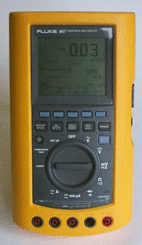End of discharge prediction;
SMART BATTERY MANAGEMENT
Project description
The project aims at predicting the end of discharge of rechargeable betteries inserted into a portable equipment.
This ongoing project is developed as a collaboration between the LIP6 (Laboratoire d'Informatique de Paris 6, Computer Science Laboratory of University Paris 6) and more specifically Mr Patrick Gallinari and Mrs Florence d'Alché-Buc of the CONNEX team and the LEP (Laboratoires d'Electronique Philips), the French research lab for Philips Electronics N.V. in France.
To get reliable prediction of the end of discharges of rechargeable batteries, and thus have a way to indicate to the user the remaining working time, we have chosen to use artificial
neural networks (NN) organized hierarchically.
 |
The use of these neural networks enables us to deal with the following battery characteristics: - non-linearity, ageing, - sensitivity to external conditions, - large dispersion of individual behavior. The proposed system is based on two neural networks. The first one is a simple model of a battery discharge curve (since no precise physical model is yet available), whereas the other is in charge of selecting the best internal parameters given the current external condition. Also, the second net is able to track on-line the variation of the behavior of the battery currently used compared to a standard, average behavior. The average error for the end of discharge prediction is 6 min. for an event that may occur in an interval of 10 hrs. This system has been implemented into a prototype of a FLUKE portable multimeter. |
|
| A Fluke Multimeter |
LEP-People engaged in the project
LIP6-People engaged in the project
Last update: (comments)